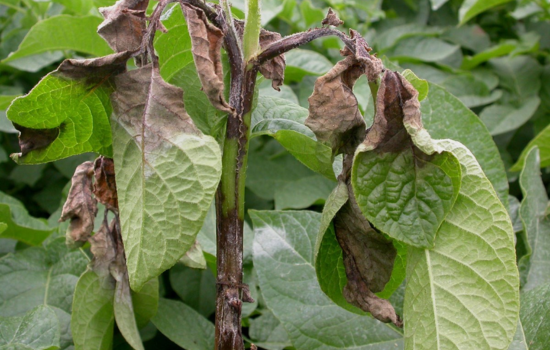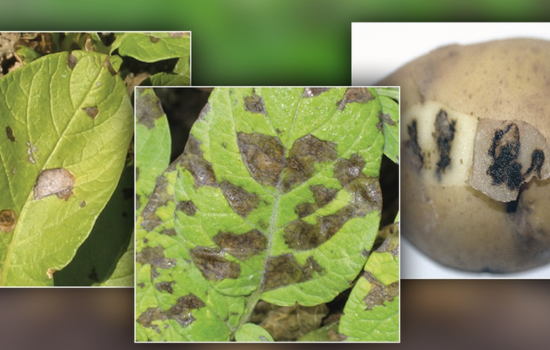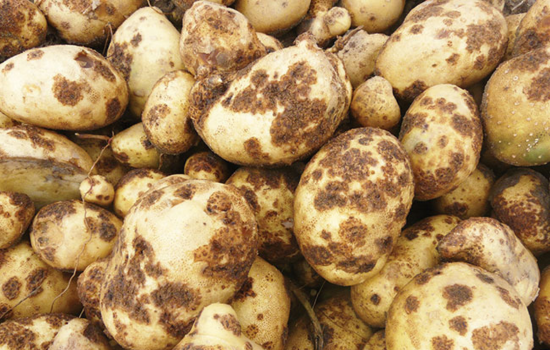Let me tell you something that maybe no one has told you yet: growing potatoes at home is much simpler than it seems… until a leaf suddenly starts turning yellow.
It’s happened to me more than once. At first, I thought it was just a lack of water.
Then I figured it was too much water. And finally, I realized the obvious: there was a disease going on.
So, if you want to understand how to identify diseases in potato plants without being dependent on Google or getting lost in confusing forums, this post is for you. I’ll explain step-by-step how I do it here in my own garden — and what you can watch for right from the first signs.
Warning Signs: How to Know Something’s Wrong?
First of all, you need to know what “normal” looks like in a healthy potato plant. The leaves are green and firm, the stems are strong, and the plant grows with a certain joy, you know? When it starts looking sad — wilted, spotted, weird colors — that’s when your internal alarm should go off.
In practice, knowing how to identify diseases in potato plants starts like this: with a trained eye.
Here are the first signs I always look out for:
- Yellowing leaves or brown spots
- Wilting for no apparent reason
- Black dots on leaves or stems
- White or gray mold, especially on humid days
- Potatoes rotting in the ground
These are common indicators, but each points to a different cause. And that’s exactly what I’m going to break down for you now.
Disease by Disease: Get to Know the Most Common Villains
I know — you don’t want to become a biologist. And you don’t have to. But some diseases are so common that if you grow potatoes regularly, you’re bound to run into them eventually. So, let’s get to know the main ones and how to recognize each one?
1. Late Blight
This one is the trickiest. Late blight hits out of nowhere, especially when the weather is humid and warm. It starts with dark patches on the leaves, like they’ve been burned. Then it spreads all over the plant. I once lost an entire harvest because I didn’t act in time.
If you see a dark spot with a whitish edge, act fast! That’s a classic sign of late blight.

2. Early Blight
This usually shows up when the weather is dry but the plant is stressed (from lack of nutrients or water, for example). The spots are circular and have a target-like appearance — kind of like concentric rings. The plant keeps growing, but the leaves are all spotted. That directly affects potato development.

3. Soft Rot
If you pull a potato from the ground and it’s all mushy and smells bad, bet on soft rot. This disease shows up when the soil is too wet and there’s little air circulation. Waterlogged soil becomes paradise for this bacteria.
Avoiding excess water and planting in pots with good drainage helps a lot, trust me.

4. Common Scab
This one’s more subtle. The potato grows, but with lots of scars, like it’s been scratched.
It won’t kill the plant, but it affects how the potato looks and may ruin its texture. Scab shows up when the soil’s pH is too alkaline.
The fix? Correct the soil before planting.

So, How Do You Identify Potato Plant Diseases Day-to-Day?
Now that you know the most common diseases, let me show you what I do every week here in my garden.
- Visual inspection. I take 5 minutes a day to look at the leaves one by one, especially the lower ones.
- Smell. Might sound weird, but I smell the plant. Any off odor is a red flag.
- Touch. I feel the leaves and stems. If they’re soft, it’s a bad sign. They should be firm.
- Light digging. Every now and then, I dig gently into the soil to check on the growing potatoes. If one is dark or mushy, I stay alert.
These simple steps have saved me a lot of headaches.
And yes, this is all part of knowing how to identify diseases in potato plants without needing help from anyone else.
Tips to Prevent Your Potatoes from Getting Sic
The best way to treat is to prevent, right? So here are my golden tips — tested and approved:
- Use healthy seed potatoes: never replant a diseased one.
- Plant in a well-ventilated spot with good light.
- Avoid waterlogging: always use pots with drainage holes.
- Rotate your crops: don’t plant potatoes in the same place every year.
- Use balanced fertilization, including organic matter and a little lime if your soil is too acidic.
- Keep the leaves off the ground by gently tying them or using mulch.
Following these practices reduces your risk of problems by at least 80%.
But What If the Plant Is Already Sick?
Then the first thing to do is separate the sick plants from the healthy ones. Do this as soon as possible.
Then, figure out which disease you’re dealing with. Each one has its own approach:
- For late blight: remove affected leaves and apply a natural copper-based fungicide.
- For early blight: improve plant nutrition and keep the soil covered.
- For soft rot: reduce watering and loosen the soil for better air flow.
- For scab: after harvest, correct the pH using sulfur or well-composted manure.
No need to panic. It is possible to save the plant, depending on how far along the disease is.
LEARN TOO:
Wrapping Up with the Honest Truth
Keeping a healthy garden requires routine. And understanding how to identify diseases in potato plants is one of the most important parts of the process. There’s no use waiting for the plant to wither before doing something about it.
I learned this the hard way. I lost plants, I lost harvests, I lost time. But I learned.
Today, I look at my potato plants with pride. They grow strong, beautiful, and healthy. And when something strange pops up, I already know what to do.
So if you made it this far, know this: you already know way more than you did before about identifying diseases in potato plants.
Now all that’s left is to get your hands in the soil, observe closely, and trust your instincts. Because in the end, those who care with attention… harvest with abundance.
